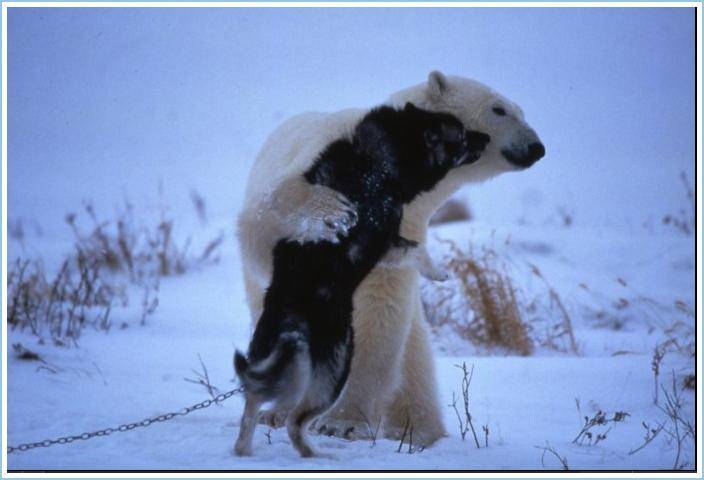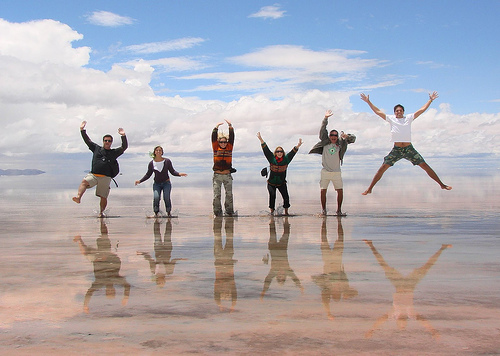The Importance of Play
Posted by Sasha Bailyn on Friday, January 6th, 2012

Way up North, in a frozen wasteland of snow and ice, a polar bear stalks a line of sled dogs. The bear picks out the last in line, and begins a predatory stalk towards her. On-looking breeders and trappers watch in horror as death slinks towards one of their prized sled dogs, and no one has a gun to defend her. The doomed dog turns to meet her maker, and bows down before the bear. But this is no bow of submission; for she raises her rear high in the air, face smiling, tail wagging in a “play bow.” The bear rears up on hind legs and pauses for a minute in slight confusion, and then bows down and begins to play with her. They enjoy a raucous romp in the snow, tumbling, nipping, yelping, and chasing, before the bear finally gets exhausted and leaves. The bear comes back every day for two weeks to see the dog – WHY? Simply to play!
This true story came to EntertainmentDesigner through Stuart Brown, president of the National Institute for Play. According to Stuart, play is not just something that adds joy to our lives. Play is fundamentally necessary for our survival and our ability to navigate life in a healthy way. And we are not getting enough of it in our schools, jobs, and everyday lives. The sobering reality is that the majority of society does not emphasize play in the Adult World. Kids get the message that in order to grow up, they must stop playing. What usually happens while growing up is that we leave play behind, shoved in a corner of a nursery, tucked under a jungle gym, or stashed up high on a shelf of toys. But in order to be healthy, well-rounded individuals, we need to keep playing long after childhood.
Despite the seriousness of the Adult World, grown-ups will still jump at excuses to play, which is why the simplest ideas – like an arcade made of cardboard – are enough to bring together a crowd of grown-ups chanting: “We came to play! We came to play!” No matter the age, every person needs an outlet for play, whether that entails doing a classic activity like bowling, facing fears on the world’s highest roller coasters, chasing after new and different theater experiences (literally), or getting up-close and personal with nature – for some this might be achieved by dining in the trees, while for others it could involve a journey through a stingray tank.

No matter how “grown up” we are, we cannot deny our natural playfulness and desire to have fun, at least not without serious consequences to our well-being. The goal of current and future entertainment designers should be to engage our innate playfulness and help align our need to play with the realities of daily living. Many of us need to be exposed to playfulness to reconnect with our own sense of humor and fun amidst the stress of daily routines, while many more of us have completely forgotten how to play and need to be reminded. For some, play is seriously intimidating and even threatening; When routines and work interactions are grounded in rigidity, the stakes for letting go and playing can be pretty high: shame, loss of control, loss of respect and self-confidence, to name a few. The venues that will be most successful at bringing play into the Adult World will employ elegant and sophisticated design approaches – play need not be portrayed as childish or saturated in Technicolor brightness, and design approaches should avoid encouraging play in a defiant or presumptuous manner. In a sea of seriousness, playful venues need to offer a way back to play that acknowledges the skepticism and hesitation of the Adult World, while still boldly and humorously pushing the limits of what it means to be “grown-up.”
Sasha Bailyn
Editor-In-Chief
sasha@entertainmentdesigner.com
image sources: http://complexworld.pbworks.com



 Sign Up For Our Newsletter
Sign Up For Our Newsletter 



